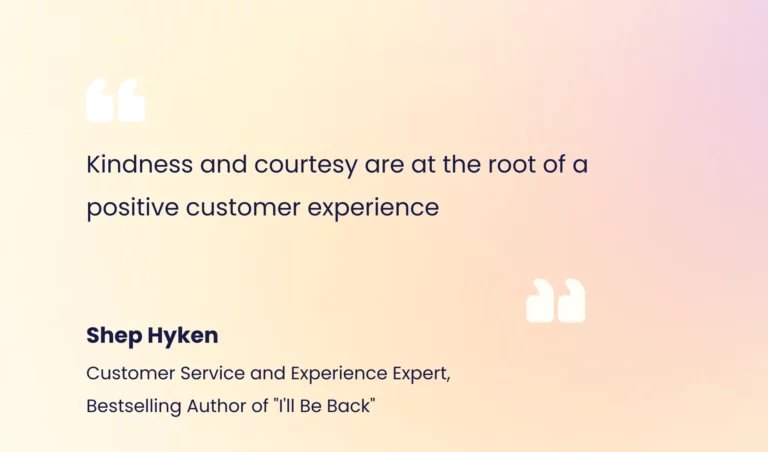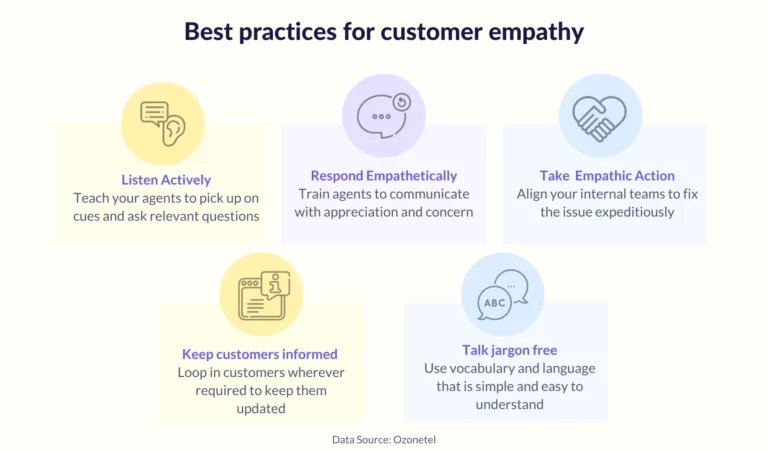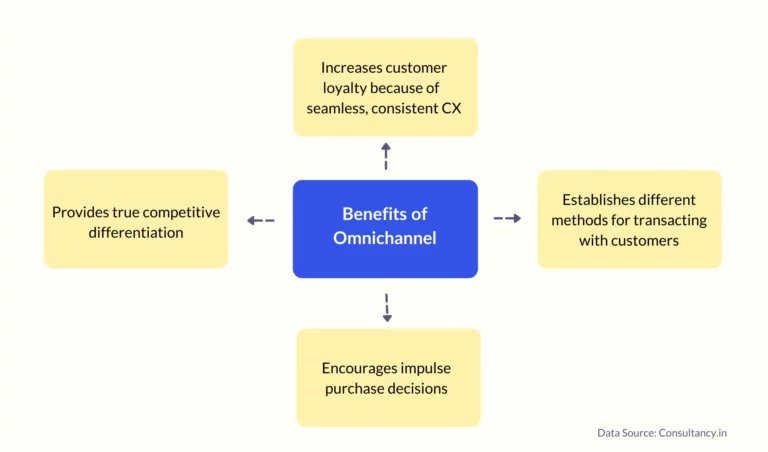5 Priorities for an Amazing Customer Experience in 2025

Table of contents
It’s no surprise that great customer experience is a game changer. In Shep Hyken’s latest report on Achieving Customer Amazement, 58% of customers said that they were willing to pay more if they knew they would receive great customer service!
The same survey also revealed that 78% of customers would go out of their way to go to a company with better customer service.
The numbers clearly speak for themselves. Great customer service is worth more than price and is a key differentiating factor in staying ahead of your competition.
So how do you create these great experiences for your customers in 2025?
Sure there’s quite a lot of information and advice on the internet. However, Shep Hyken’s latest ACA Report focuses on five ways to achieve a customer experience that keeps your customers coming back. In this article, we elaborate on what these are and how you can incorporate them into your CX program at scale.
Table of Contents
- Building a robust customer experience strategy in 2025
- So then, what’s the bottom line?
- Why you need to consider Hiver in your CX strategy for 2025
Building a robust customer experience strategy in 2025
Let’s dive into the 5 most important factors that you need to consider to build an amazing customer experience.
1. Show your customers that you care

At the outset, showing empathy towards your customers seems like an easy feat. Right?
Yet, you would be surprised to know that nearly 60% of customers choose to walk away from a business simply because employees don’t show any emotional connection or investment in the customer’s problem. Something to truly think about.
One of the most important aspects when talking about an amazing customer experience is to remember that customers are human (and not ticket numbers). They need to feel heard, understood, and reassured that you are doing your best to resolve their issues. Being able to think from the customer’s perspective and react accordingly is your chance to earn customer loyalty.
In fact, Ikea is one among good customer experience examples and a lot of businesses could take a page out of Ikea’s book when it comes to understanding customers and guiding them towards apt solutions.
In their campaign – Make Home Count, Ikea released a video that touched on making the most of the time at home during the COVID-19 pandemic. What made it even better was the strategic product positioning that subtly showcased to consumers what their home could look like with Ikea products.
Truly empathizing with your customers can build their trust, earn their loyalty, and foster long-term customer relationships. This is in fact a key differentiator for brands.

2. Enable seamless customer interactions and experiences
If you’re someone who likes to dine at restaurants, then you might have come across contactless dining experiences. First introduced as a hygienic measure during the pandemic, contactless ordering is now associated with not just safety but also a seamless dining experience.
All you have to do is scan the dynamic QR code at your table, glance through the menu, and place your order.
No more waving about your arms and trying to catch the attention of the waiters or having to wait around impatiently to place your order. Talk about convenience and prioritizing customers’ needs.
Why is this important? 68% of customers say that convenient customer service will get them to come back to a brand.
Here are a few ways to make your customer experience more convenient:
- Build your product or service keeping the customer’s perspective in mind – Would you jump through the same hoops your customer has to in order to avail the benefits of your offering?
- Simplify your customer service – Ease the process of getting support. Enable your customers to solve simple queries through self-service tools and live chat enabled through chatbots. For complex queries, equip your agents with all the information they need to resolve queries faster.
- Understand the user experience – Identify points of friction by tracking the right metrics and streamline your processes to better cater to your customers’ needs, You can do this by using user research platform.
- Use technology at the right touchpoints – Just like the example of contactless dining, using technology for making reservations, fixing appointments, payment transfers, auto-fill forms, etc can go a long way in reducing customer effort.
- Improve your accessibility– How easy is it for customers to access your offerings physically and digitally? How easy is it for customers to navigate your digital channels? Ease of access determines how highly your customers value you over your competitors
3. Be where your customers are
50% of customers say that they will switch companies if they can’t connect with a brand over channels they prefer.
A key priority for customer service is making it easy for customers to reach out to you on the channels they prefer. With technology opening up myriad ways to interact with companies, customers now associate multi-channel experiences with ease and accessibility. Two very important aspects of customer convenience.
Take Best Buy for instance. The consumer electronics retailer found a way to merge both physical and digital experiences to deliver the best customer experience. While they run multiple brick-and-mortar stores, they have their own mobile app that allows customers to scan products from Best Buy’s circulars or brochures. The app reduces the friction in the purchasing journey by enabling customers to make instant purchases that they can then pick up at the store, saving them hours of browsing through the store.
Additionally, Best Buy even offers expert consultations via online chat, phone, virtual appointments, and in-home consultations to help customers choose the exact solutions they need for their homes. Once again taking the hassle out of the customer experience.
Here are a few tips to optimize your customer service channels:
- Develop a clear understanding of the customer journey – Mapping the customer journey will allow you to identify channels that perform the best and understand what’s working and what’s not. It also enables you to provide personalized experiences as per customer preferences and personas.
- Ensure customer care is an organization-wide initiative – Ensuring that your business is truly customer-centric requires different departments and stakeholders to work together towards enhancing the customer experience. A uniform experience is critical for nurturing a loyal customer base and increasing retention.
- Invest in the right technology – Leverage technology to your advantage. Tools like live chat, CRMs, social media management platforms, and customer support platforms can be integrated into your CX workflows to help analyze and optimize multi-channel customer support.
- Ensure investments are in line with strategy – Once you have a clear understanding of where your customers are and what they are looking for, ensure that your investments help support the goal of meeting these customer expectations.

4. Ensure that your customers don’t have to keep repeating themselves
Let’s say you want to activate your brand new credit card through mobile. You place a call to the bank’s support, get connected to an agent, and then provide all the information they’ve requested. For some reason, the call drops. You make another call and it looks like the agent you’re talking to now has no context about your request. You’re having to repeat what you’d just finished explaining to the previous agent.
Frustrating, right?
A key finding from Shep Hyken’s latest research is that 71% of customers will switch companies if their call keeps getting transferred, forcing them to repeat the same information again and again.
Making your customers repeat themselves clearly is a sure-shot way of annoying them. Establishing a clear path for communication is an important way to avoid this. Here are some things you can do:
- Use pre-chat form fills to capture relevant information before connecting customers to an agent. This way all necessary information is recorded and readily available. This is particularly important when it comes to new customers. It is also a great way to ensure that you’re properly prioritizing your customer’s needs.
- Screen incoming calls in real-time to understand the intent of the caller and then route the calls to the appropriate agents to cut down on multiple call transfers.
- Establish a collaborative approach to customer support so that everyone is aware of who is tackling what.
Businesses can cut down on repeat callers by making a dedicated page for frequently asked questions or supplying them with information via an app.
Let’s use the credit card example again to explain what we mean. If a bank customer has to frequently call in for credit questions or wait a year for their free credit report, it could make them lose track of their finances. To improve user experience and customer satisfaction, banks can create apps that monitor credit scores in real-time.
5. Keep your CSAT surveys short and sweet
Would you believe it if I told you that 40% of customers stopped doing business with a company simply because their CSAT surveys were just too long? Surprisingly enough, these are facts.
Think about it. How often have you avoided giving honest feedback just because the survey form seemed too long, too redundant, and well, time-consuming?
If your CSAT survey is too complex, then you are losing out on a lot of valuable customer feedback, which could have in turn helped you to identify customer pain points and improve your offerings.
How can you improve your customer satisfaction surveys?
- Identify the right time to send out your survey – Avoid sending out surveys too long after a customer service call. It’s best to send out your CSAT survey as soon as the issue is resolved or once a customer has experienced your product. This way the experience is still fresh in the customer’s mind and it gets easier to give feedback.
- Incentivize your customers – Coupons, vouchers, and discounts are all great ways to reward your customers and appreciate them for taking the time to fill out your survey
- Keep it crisp – Do not drag out your survey. Keep it short and clear. Multiple choices questionnaires are the best. However, at times the occasional descriptive questions can be added with caution
- Let customers know you’ve heard them – Try to let the customers know that you’ve taken their feedback seriously. It would be even better to let them know if a particular suggestion has been actioned. This will make your customers feel valued.
So then, what’s the bottom line?
83% of executives feel that unimproved customer experience presents them with considerable market share and revenue risks.
Yes, customer experience is that important. In fact, research shows that even a moderate increase in customer experience generates an average revenue increase of $823 million over three years for a company with $1 billion in annual revenues.
Isn’t that just huge?
If the last few decades have taught us anything, it’s that customer behavior is dynamic. The advancement of technology, the state of the economy, and a number of other uncontrollable factors mean that customer expectations are changing every year. And so, businesses need to be on their feet to keep up with these changing demands. After all, happy customers are the greatest brand ambassadors!
Creating a CX strategy based on the above tips will help you accurately capture the voice of the customer, align products and services to customer needs, and more importantly drive loyalty.
Why you need to consider Hiver in your CX strategy for 2025
Scaling up your customer experience program requires you to invest in technology that can truly help delight and retain your customers.
A 360-degree customer support platform like Hiver offers your support teams everything they need to deliver low-effort, frictionless customer service. And the best part about Hiver is that it enables customer convenience.
But how?
Hiver is the world’s first customer service software that works inside Gmail. It intuitively fits within Gmail’s native interface and that precisely makes it extremely easy to use.
Hiver offers features that allow teams to tackle customer queries at scale and gain deep insights into the quality of support you provide.
Features like email management, live chat, voice support and WhatsApp messaging allow you to interact with customers across multiple channels. You can also send short CSAT surveys that help you collect accurate feedback from customers. In fact, we could just go on, but we think it’s better if you could see for yourselves.
Take Hiver for a spin and discover how we can help you wow your customers.

































